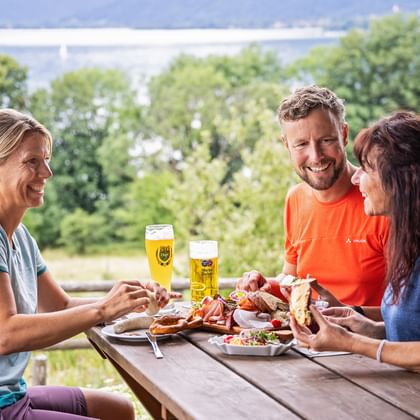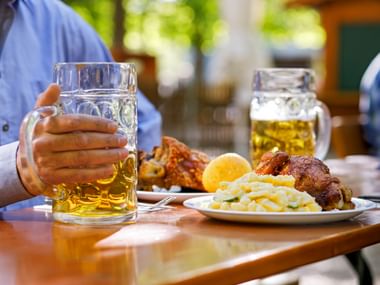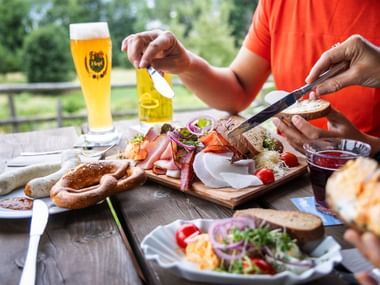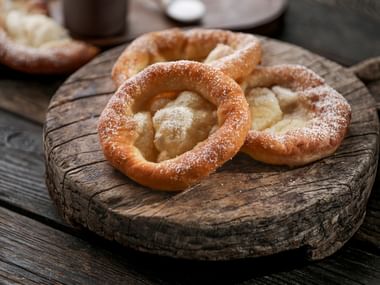Brotzeit—a traditional Bavarian snack—is simply unforgettable. What’s served varies with personal taste, but one thing’s certain: it’s always laid out on a rustic wooden cutting board. Originally, it was the farmers’ second breakfast, eaten out in the fields to recharge their energy. Back then, simplicity ruled—just hearty food and hard-earned hunger. Today, Brotzeit is enjoyed anytime, whether as a relaxed afternoon picnic with friends or a casual evening in the beer garden. A Brotzeit is always welcome and truly cherished.
Everything your heart (and stomach) desires is piled high on this lovingly arranged platter. You’ll find sausages and cheese, radi (a fancy Bavarian radish) and regular radishes, spreads, cold cuts, Leberkäse (think finely ground Bavarian baked sausage loaf), and even meat patties. Feeling extra hungry? Enjoy them warm with a side of mashed potatoes. And of course, there’s always a cold, refreshing beer ready to wash it all down — because everything’s better with Bavarian beer.
We’d like to introduce you to a classic Brotzeit favorite: Obatzter. The name comes from the regional term “anbatzen,” meaning to mix or mash leftover cheese together. Its exact origins are a bit of a mystery, but it’s said that in the 1920s, a hostess named Katharina Eisenreich served this delicious spread to her guests at the Weihenstephaner Bräustüberl in Freising. Obatzter is made by blending overripe soft cheeses like Camembert or Brie with butter, onions, and paprika until it becomes a creamy, spreadable delight. It’s best enjoyed with hearty bread or a salty pretzel.








